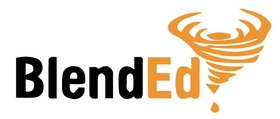Using Small Group Instruction in BlendEd Classroom

Levels of implementation for Indicator 1.4 from Blended Observation Rubric
Senior Government Station-Rotation - JD Dalrymple
I will provide an example of a project which would demonstrate a fully integrated lesson for this benchmark. The aforementioned project took place in a senior government class, but could be adapted to fit any level or content area. Students in my class were tasked with creating a module in Canvas for their classmates to work through. The students in class were divided into 3 groups. Each group was given a specific area to focus on within the Executive Branch. This project consisted of multiple days. However, for the purpose of this benchmark, I am going to focus on a single day in which a station-rotation model was used. The groups had 4 stations they needed to rotate through during the course of a 48 minute class period. The four stations were:
How to Embed Videos in Canvas
How to Create a Quality Discussion Board in Canvas
How to Create a Meaningful Assignment in Canvas
One on One Time with Mr. Dalrymple
Groups spent 8 minutes at each station. Groups had 2 minutes to transition between the stations. The three stations involving creation on Canvas had short screencasts for the groups to watch followed by questions for the group to discuss about to effectively implement these into their modules.
The 8 minutes spent with me allowed the groups to explain to me the outline of their module. This also allowed me to answer any questions the groups had regarding the project itself.
Groups within Self-Paced Modules - Lauren Rabourn
I will share my most recent example for this particular area where I believe I was fully integrated. I created a novel unit for my English 11 General class - a group of lower level learners that do have some awesome abilities. The unit/module was set up to be self-paced with a start date and an end date. (Note: I did use a big chart in the classroom for students to mark their own progress through all learning activities, which was huge for motivation as well as a visual to just look at each day when entering the classroom.) Within each section (or chunk) there was a place where students were to meet with me in a study group to go over the assigned chapters - study guides, discussion questions, etc. After the first week, these study groups picked up to happening daily. I had small groups every day ranging from 1 student to 7 or 8 students at a time. Our study groups would meet in the hallway right outside the classroom, so the room would be quiet for any other students working on other learning activities. I would start each class period by checking the progress chart to see what study group we needed to start with that day, depending on where each student had placed their sticker. And we would just work through them from there. While we were working in study groups, other students were continuing to catch up, stay on track, or work ahead. With this particular group of students, every day was a challenge keeping them on task and motivated to work on anything that was given to them.
These small groups turned out to be more focused and engaged than anything else we had really done. Each student had a voice as they all had to participate in order to earn the points for each study group. This was difficult for many of them for the very first one, but after seeing how they weren't being judged for their answers or questions, they would share more information about the story and what they were learning, enjoying, not enjoying, etc. than I had anticipated. Conversations grew beyond the study guides and added discussion questions. Students were adding on to each other's answers and correcting each other with details missed. I got to a point where I could sit back and they were taking the lead in helping one another. I should note that many of the students in this class are on IEPs and would spend any work time they had leaving my classroom and relying on other help to get things done. By this time of year and this particular unit, those students were no longer leaving the classroom for any purpose. They were some of my better talkers/sharers during study group time and would even take the lead in helping their classmates!
Aside from the study groups, students were often working through study questions together along with other tasks given. I am notorious for just sitting down on the floor or in a desk within a group and joining in on whatever is going on. This is something that happens in all of my classes - not just this particular one. Students really like when you get on their level - it is less threatening to them. They feel comfortable sharing their responses or what they are thinking because they know that even if they are wrong they will be guided in the right direction based on how they got to the conclusion they did. When they see that you aren't scared to sit down with them and be a part of what is going on rather than just telling them what they need to know, how they need to show what they have learned, etc., they are more likely to give you exactly what you are looking for - even the kiddos that you thought couldn't speak!
With this particular group of students, every day (from the beginning of the school year) was a challenge keeping them on task and motivated to work on anything that was given to them. I had to get really crafty some days to keep them engaged in their learning for the day, and I played around with different BlendEd strategies throughout the year. I got gutsy and wanted to go all in with these kids because I really knew that they could do it; they just needed to be pushed to show their abilities. I also really wanted to compare this group of students to the other group - English 11 College Prep. I wanted some observational data, so I knew what more I could do in the future with these kids and other classes just like them. Now, I know with a little work, all students can grow through the BlendEd Learning process - even our most reluctant learners and students who just want to get by or do nothing. This was a much-needed win for this particular class when it came to small groups in my BlendEd Learning classroom.
The following images are what the unit looks like in Canvas. This would be one group that I didn't have anyone else take pictures of, nor did I think to grab my selfie stick and grab a quick shot while we were working! I did include a picture of student chosen small groups for the final project (W)rap it up! Students were to create a rap video that summarizes/highlights the major events from the reading. When students figured out that they had this project to work on, they were SO excited and even started working quicker through other tasks listed just so they could get to this project. I wish they would have been more excited to want to share these rap projects with anyone other than me :'(
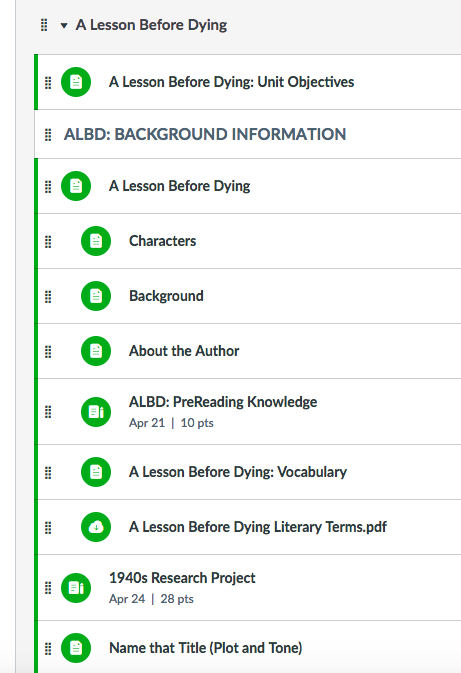
A Lesson Before Dying S1
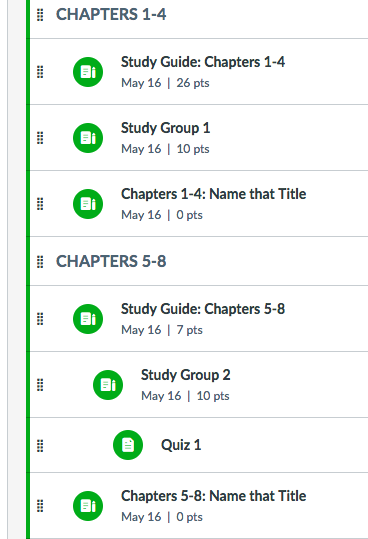
A Lesson Before Dying S2
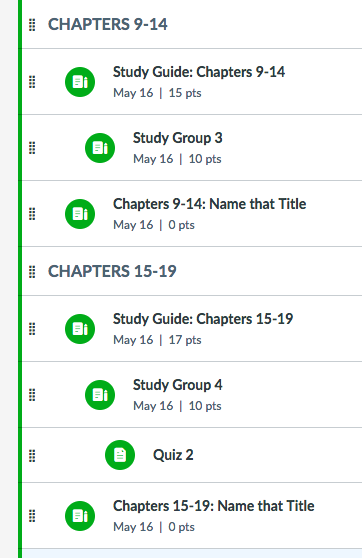
A Lesson Before Dying S3
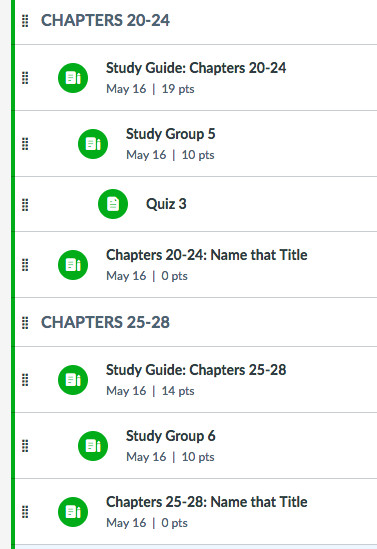
A Lesson Before Dying S4
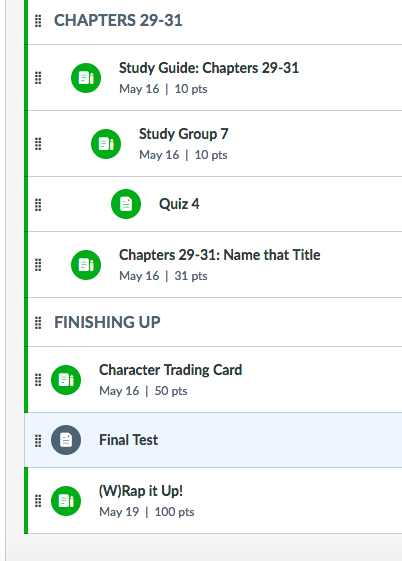
A Lesson Before Dying S5
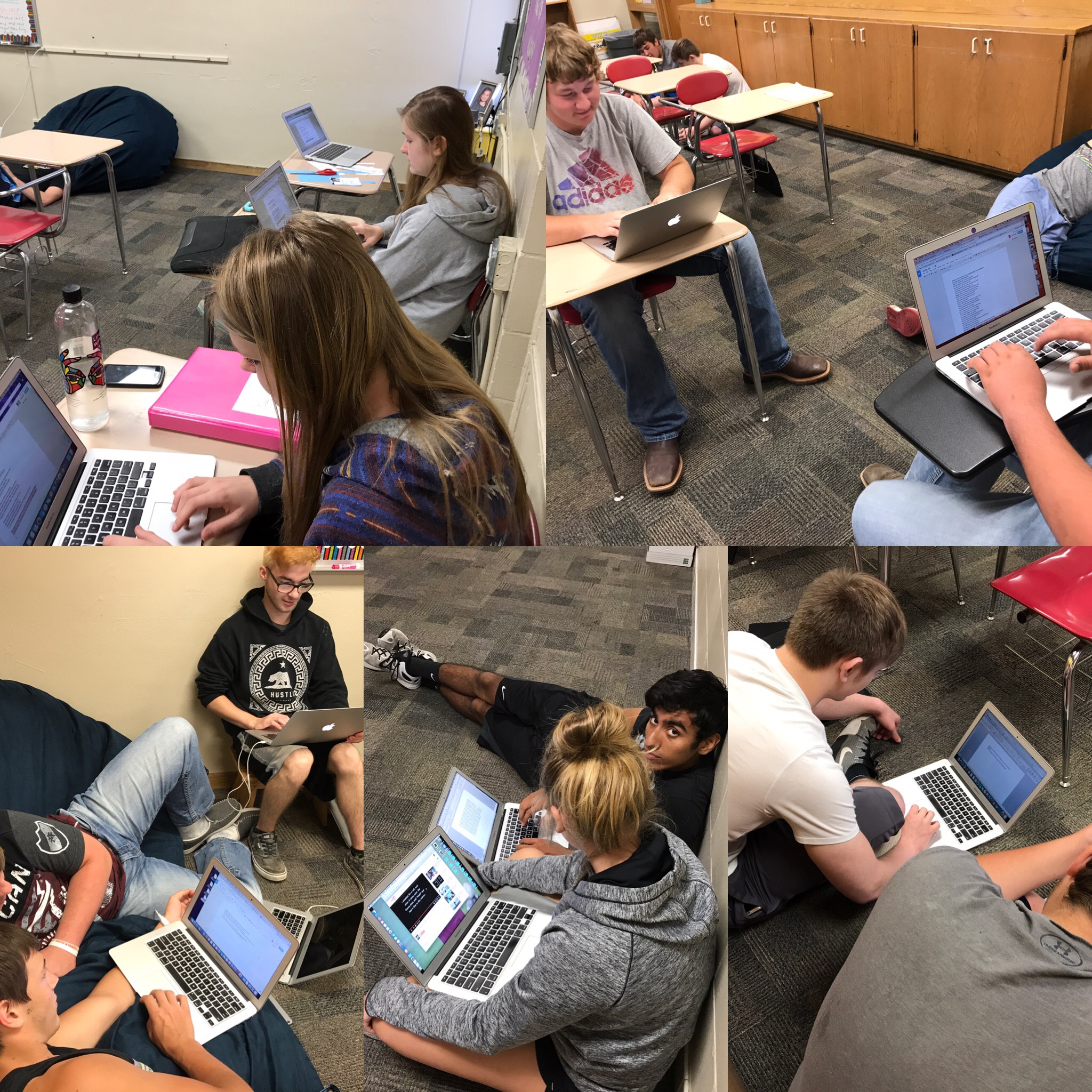
Students working in Stations
*Extra Share: Here is a look at the progress chart I created for this group to keep up with motivation and a visual to see progress each day.
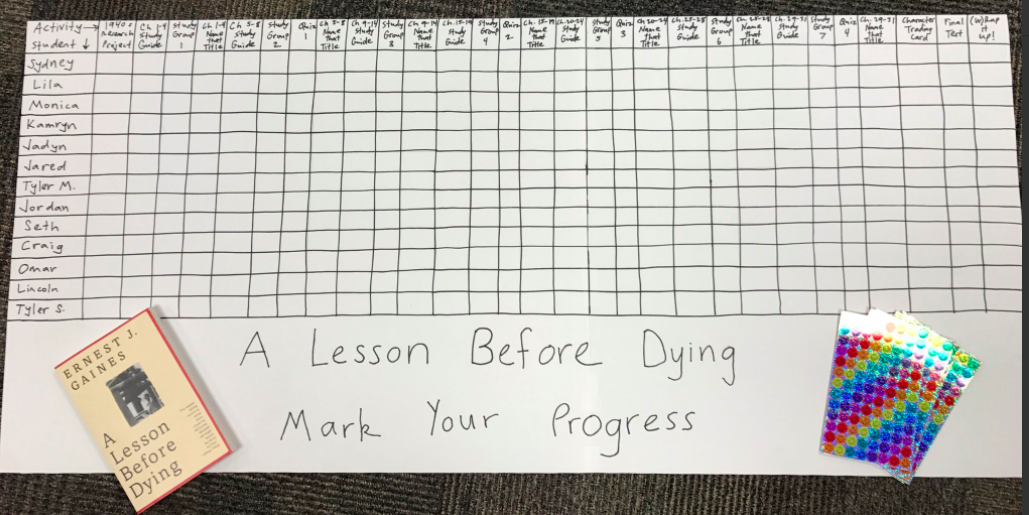
Progress Report 1
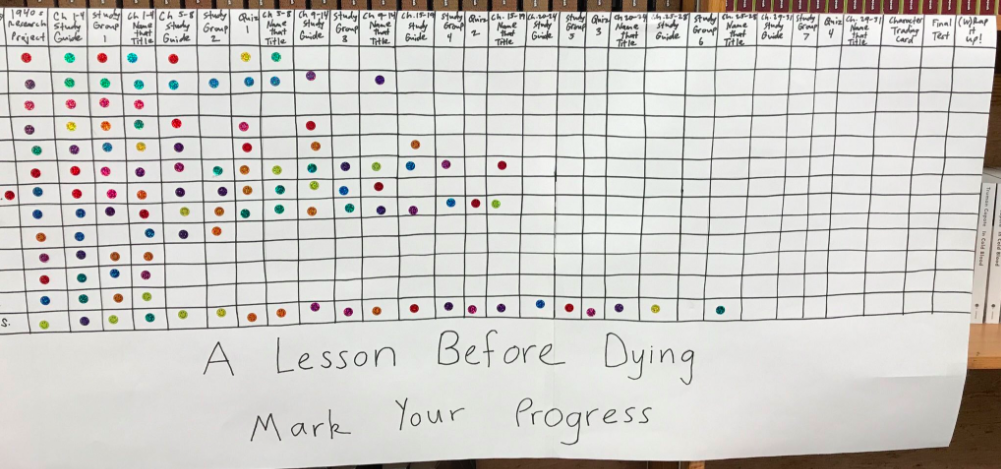
Progress Report 2
Students Take Risk in Small Groups - Becky Schueth
Small group instruction has been amazing in the math classroom! I fall between some evidence and fully integrated levels. Students are very willing to share information and take risks when working in a small group versus the entire class. This is especially true when grade levels are mixed. Not many students are willing to take a chance on being wrong; in the same token, many students do not want to be the smart student in the class. Small groups give students the power to answer problems and discuss possible solutions while collaborating with their peers which will be an essential life skill in any future career that they choose.
I am going to utilize IXL and Ed Ready this school year to keep students moving forward more at their own pace. My goal will still be to test at the same places, but I want to work even more with small groups rather than be at the front of the room for teacher lecture. I know my students have requested having the real-life presentation, but I am hoping to show them the immense benefits of working with the video to get the preliminary concepts and then using small groups to dive into the content and get a deeper and more concrete understanding of the math concepts. This enables students to take a much more independent role in their learning which will help them with the transition into college and the workforce. Getting our students prepped for their futures has always been the goal, but with changes in technology, we have to change our game too!
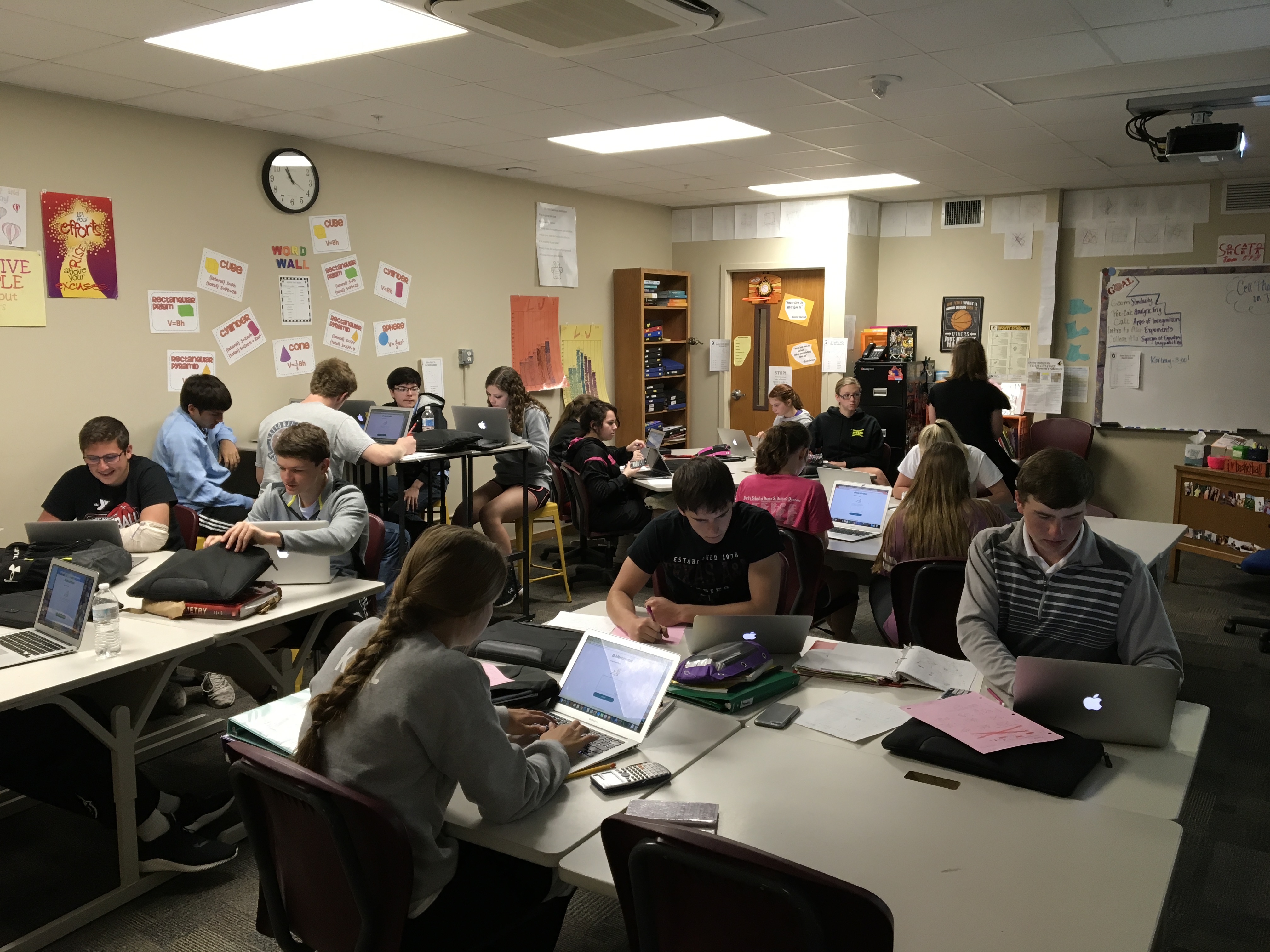
View of stations in HS Math
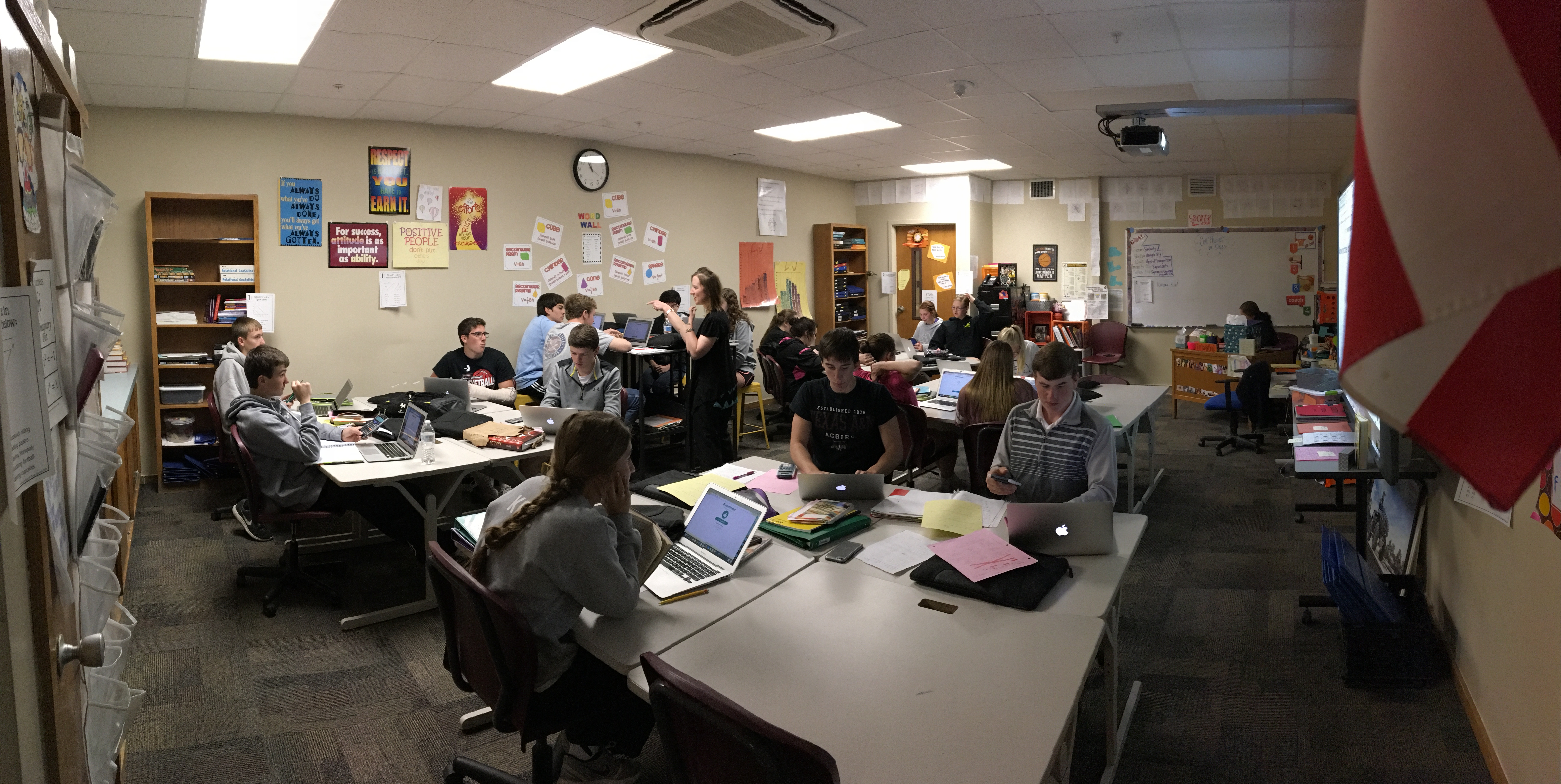
View of students in stations for HS Math
Activities for Small Groups - Nicole Hilderbrand
Small groups are utilized on a regular basis in my classroom. Students are put into various groups for different activities. Sometimes the groups are formed based on ability, other times they are random and sometimes I even allow them to pick their own partners. Having students work in small groups has revolutionized my teaching. It enables me to have in-depth conversations with students that wouldn't speak up in a regular classroom setting. It also enables me to work one on one with students on a daily basis. Sometimes, I even join groups to work with them. This may mean that I am the one recording all of the information or the one helping them find the information in the book. However, I have found that students who usually don't want to put forth effort strive to impress me in these situations. I also utilize small groups in station rotations. Sometimes I will have a teacher-led station and sometimes I will just float around to help where needed. Students love working in small groups.
I have attached some examples of students working in small groups.
Students are working on analyzing primary documents in these photos. Groups were determined by me.
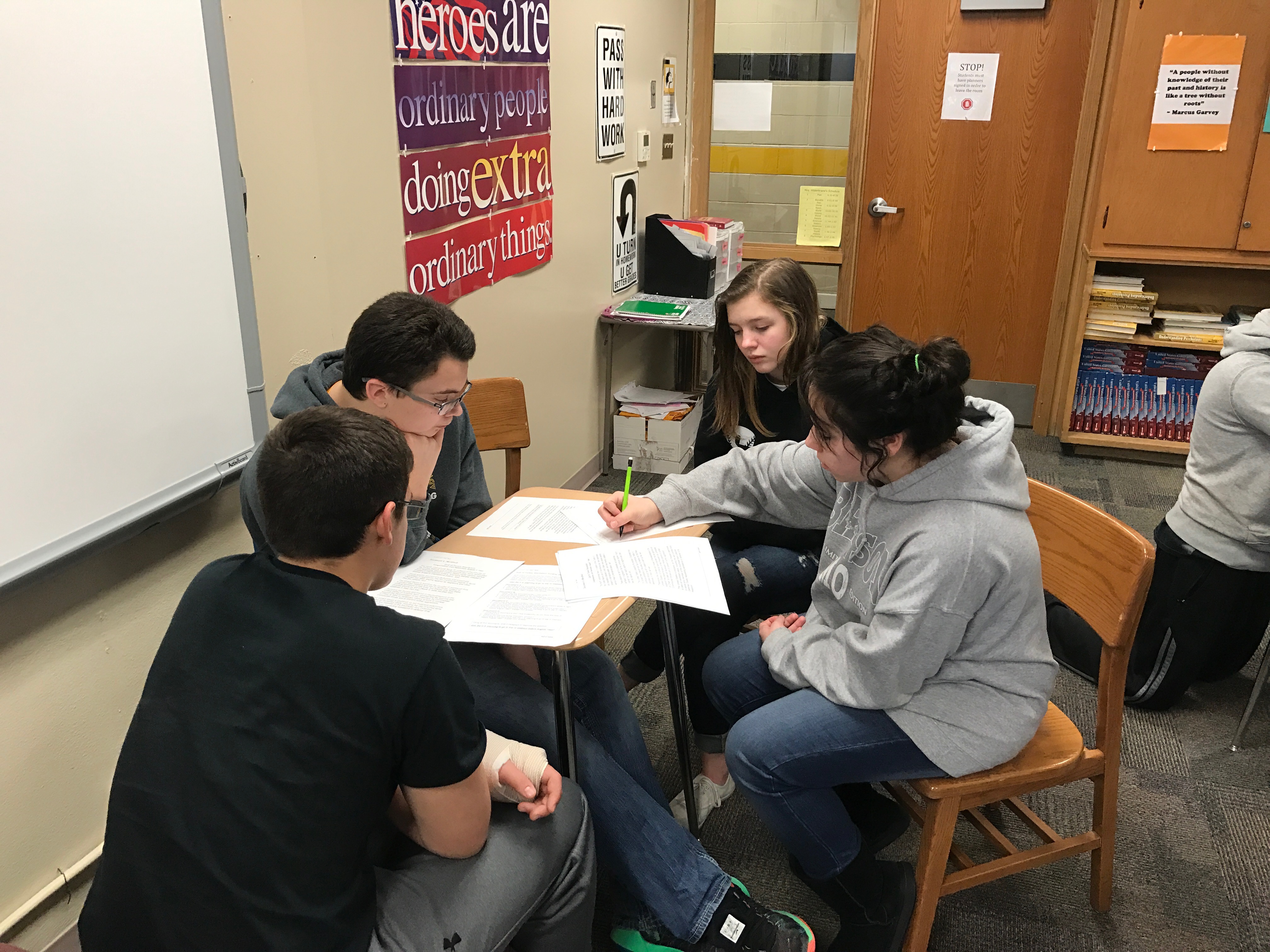
Collaborative Work
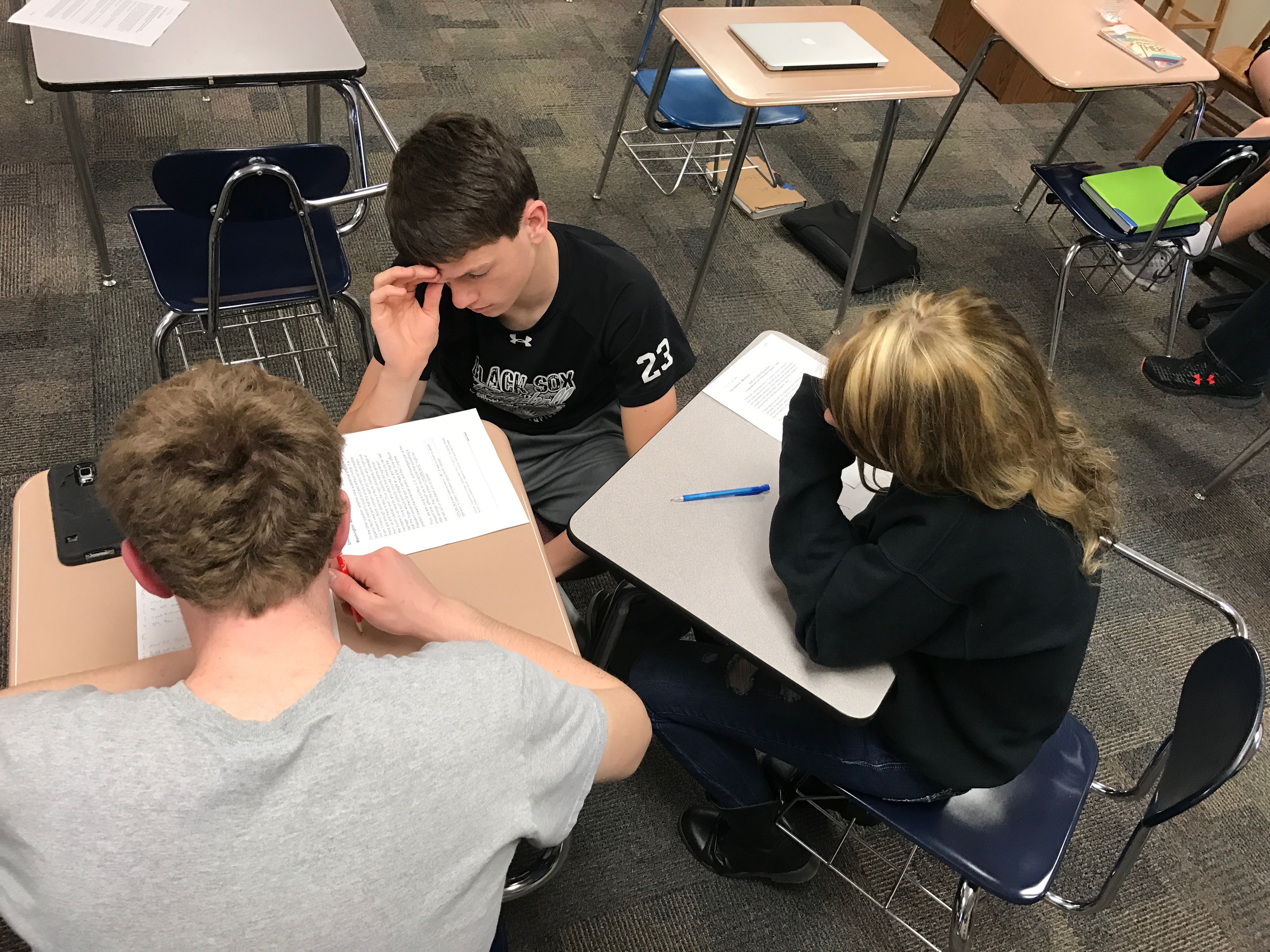
Collaborative Work
This is a small group that didn't want to work on anything. So, I joined the group and started calling them my study buddies. This became a regular thing in this class period. As the weeks went by, our group grew in size.
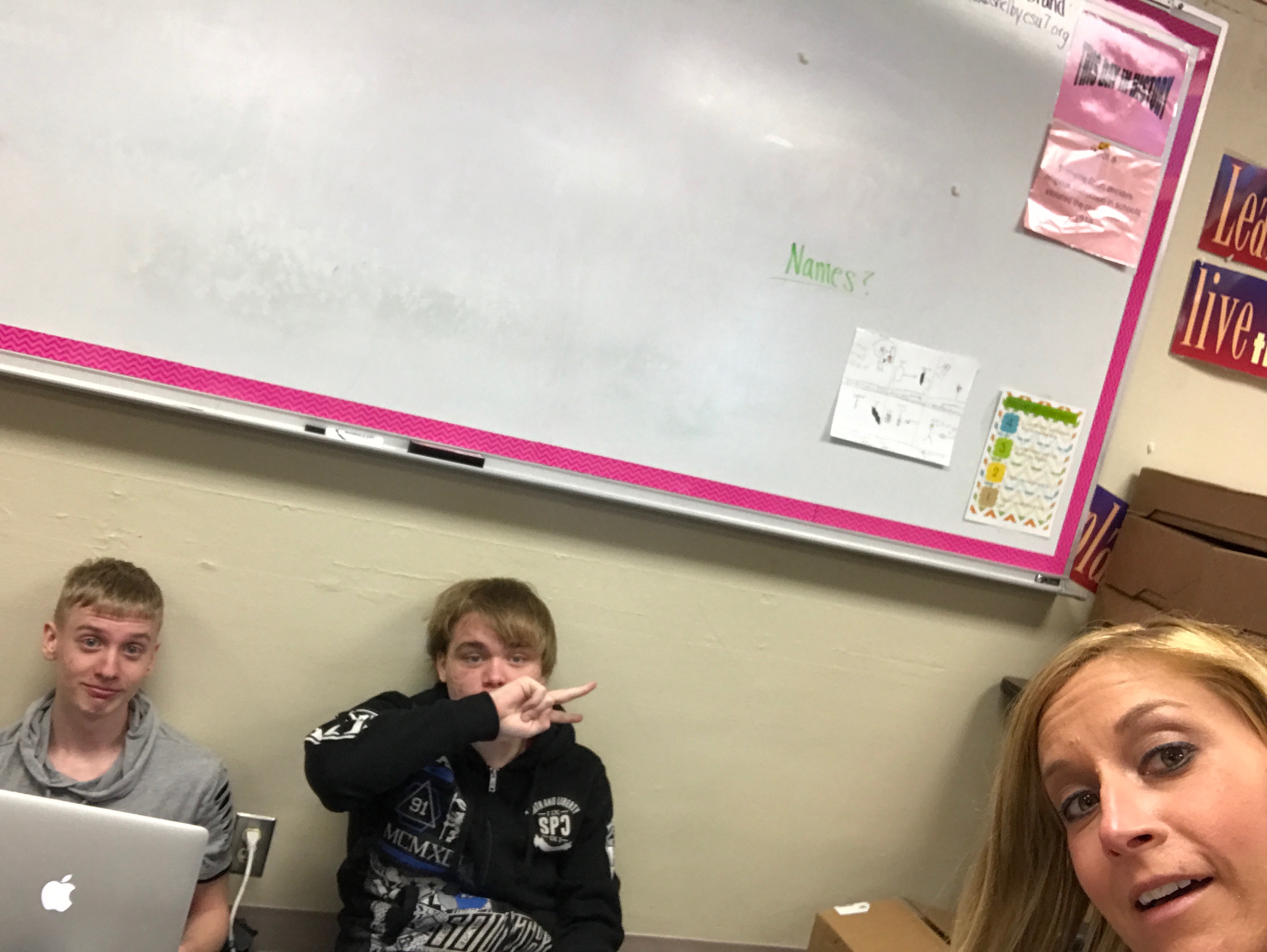
Small Group
Click the link to see an example of a group project students will complete in Civics this year.
